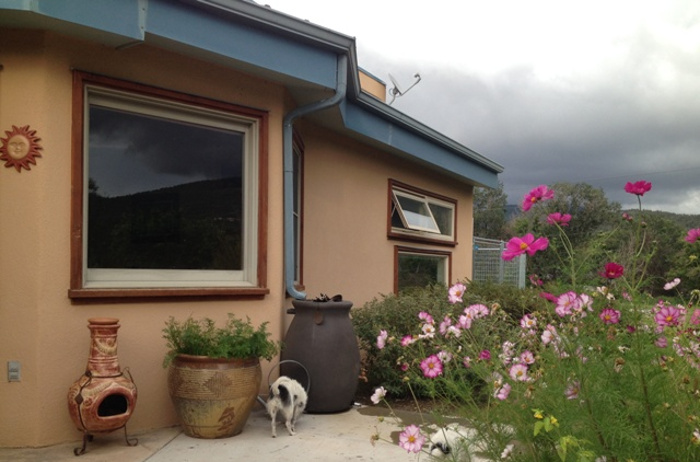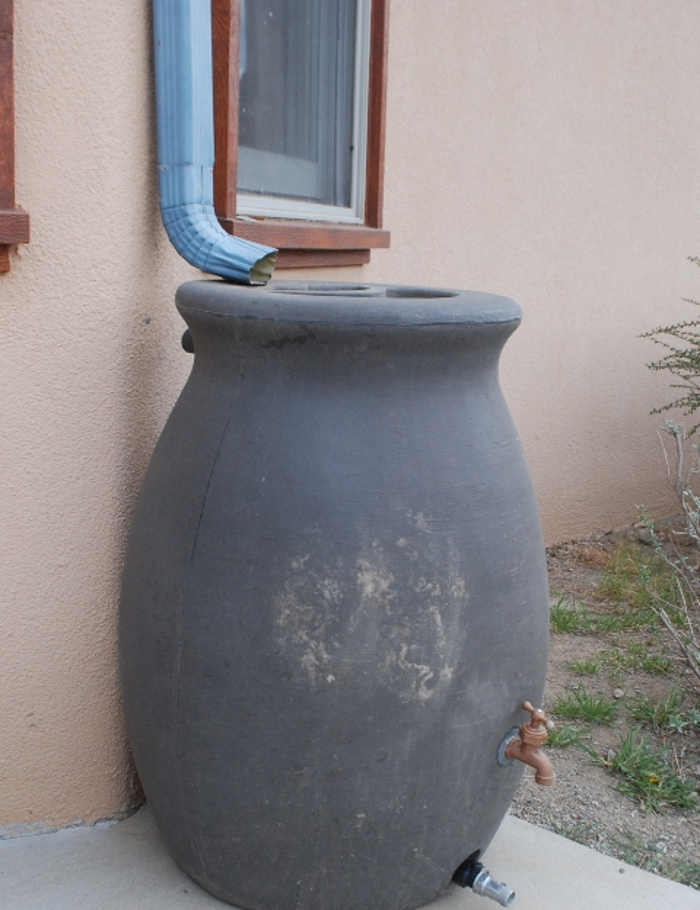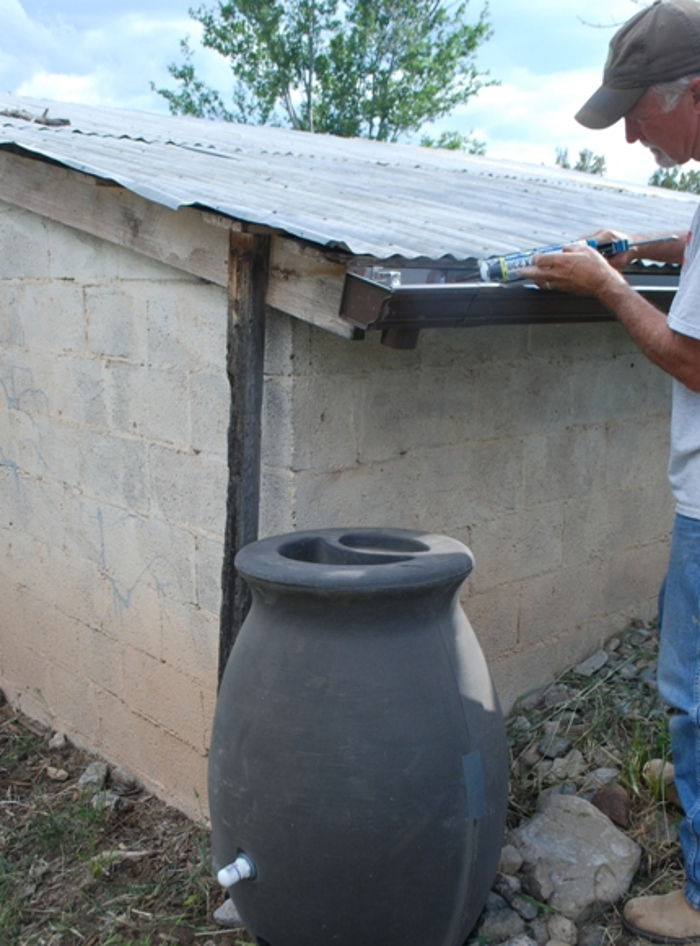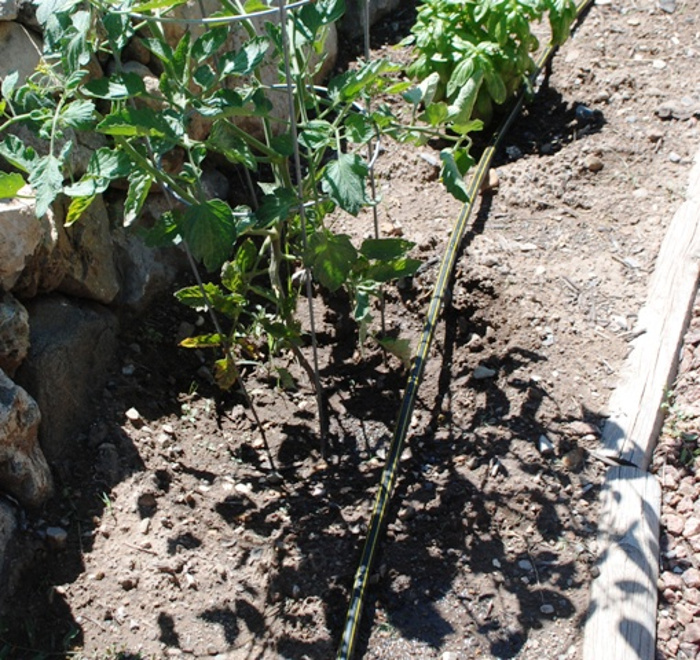It seems that Los Angeles officials are considering installing cisterns with smart technology to catch rainwater for irrigation. It’s about time. Even when rain barrels and cisterns fail to collect all of the water that falls from the skies or flows from the roof, they still make use of water that might otherwise run off and go to waste. And homeowners can use the water for ornamentals and even edibles.

Rain barrel by a house. Used to water carrots in the pot next to it one year, along with container tomatoes.
Water restrictions can force patches of brown grass more than landscape alterations. Pulling up some of the grass, replacing it with a few vegetables and herbs, and then watering those edibles with rain water seems like a really smart and sustainable solution.
Collected rain water from common roofing materials is safe for edibles as long as you follow a few preventive collection and watering practices. Most of the tips are about rain barrels.

Here’s the same barrel up close and right after we put it into service in early spring.
Safe Rainwater Collection
None of our research makes claims that collected rain water is potable. There are just too many variables. In urban areas, pollution settles on rooftops. Critters and birds fly over or hang out on the gutters, likely leaving droppings. Here are a few ways to make your collected water safer for vegetable use:
- Clean rain barrels with a bleach solution before using them for edibles. Rutgers also recommends adding eight drops of bleach per month for a 55-gallon barrel, and waiting 24 hours before using the water so the bleach can dissipate.
- Rinse out barrels once a year, removing sediment and using either bleach or a vinegar and lemon solution to clean the barrel.
- Keep gutters clean and free of debris, which also makes good sense for roof maintenance.

Installed a new rain barrel system on the shed near a vegetable garden.
- When installing a new system, it’s recommended to have a first-flush diverter added. This washes the first flush of downspout water, along with debris and contaminants, away from the barrel before it begins filling.
- Most commercial barrels have screens to keep debris (and birds or other small animals) from getting inside the barrel. Be sure to wipe the screens off from time to time. Even leaves can rot and drip into the rain water.
Safely Watering Vegetables & Herbs
Of course, you can choose to water only ornamental and house plants with rain water if you have any doubts. I also tend to alternate watering between my barrel and well for vegetable rows, just to mix up the nutrients and potential metals from both, and because the barrel by the garden usually empties before the next good rain. For safest edible watering, be sure to follow these tips:
- After a barrel fills, use the first full bucket or so on ornamentals, not on vegetables or herbs. This first flush from the barrel usually contains more contaminants because of settled water at the bottom.
- Always water the soil and not the plant, a best practice for gardening anyway. And the soil absorbs the water, not the leaves. This is especially important for any edible you harvest from above the ground (or other than root vegetables).

Drip irrigation is the best method for watering efficiently and safely, and can work with some rain collection systems.
- Water in the morning and wait to harvest, after the sun’s rays have dried and disinfected the plants.
Most smaller rain barrels lack the pressure required to drive soaker hoses. Raising your barrel a few feet can increase the pressure to allow use of a hose or drip system, but likely not enough to run a lawn sprinkler.
 |
Author Teresa Odle - Published 12-10-2020 |
